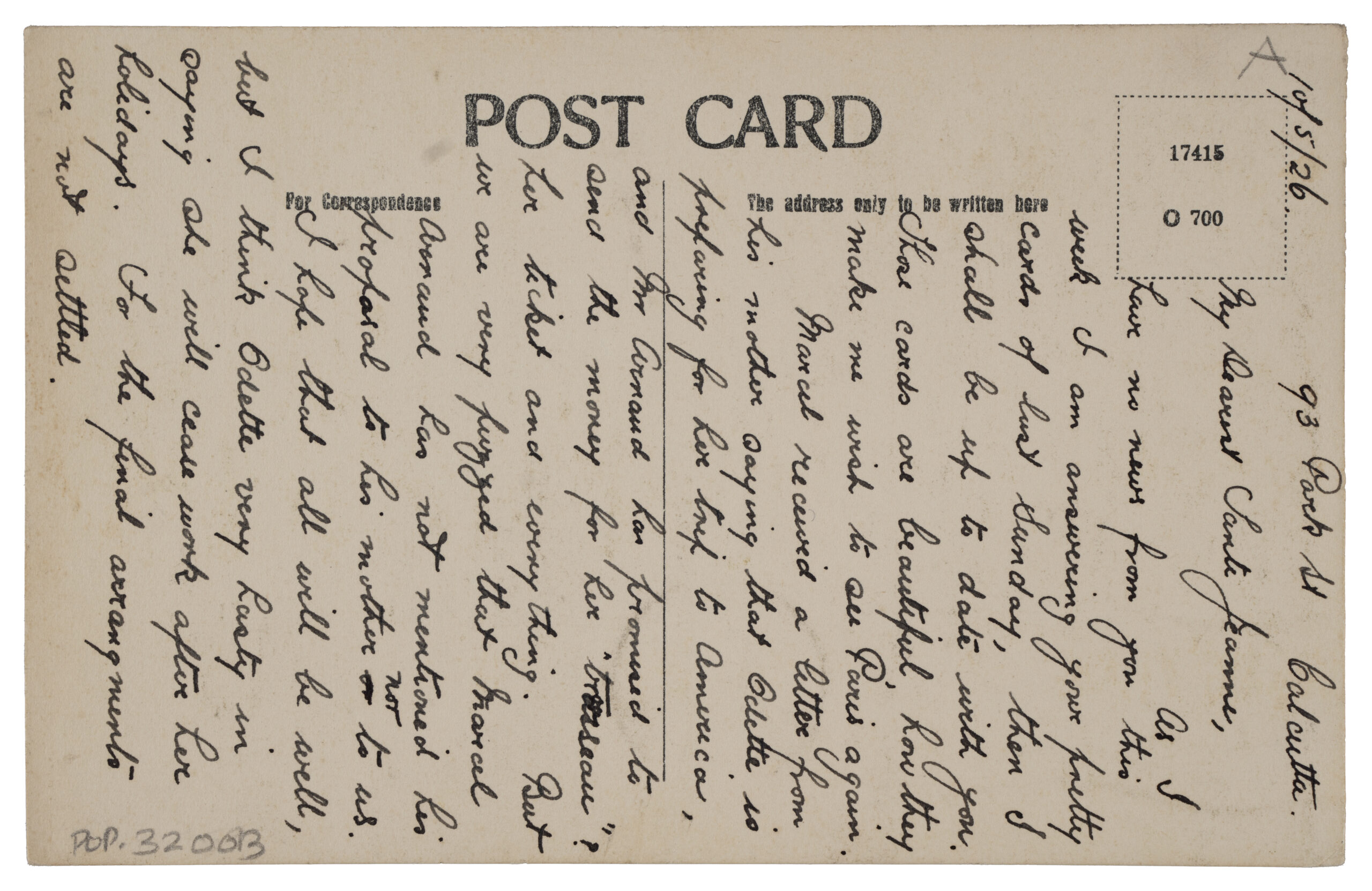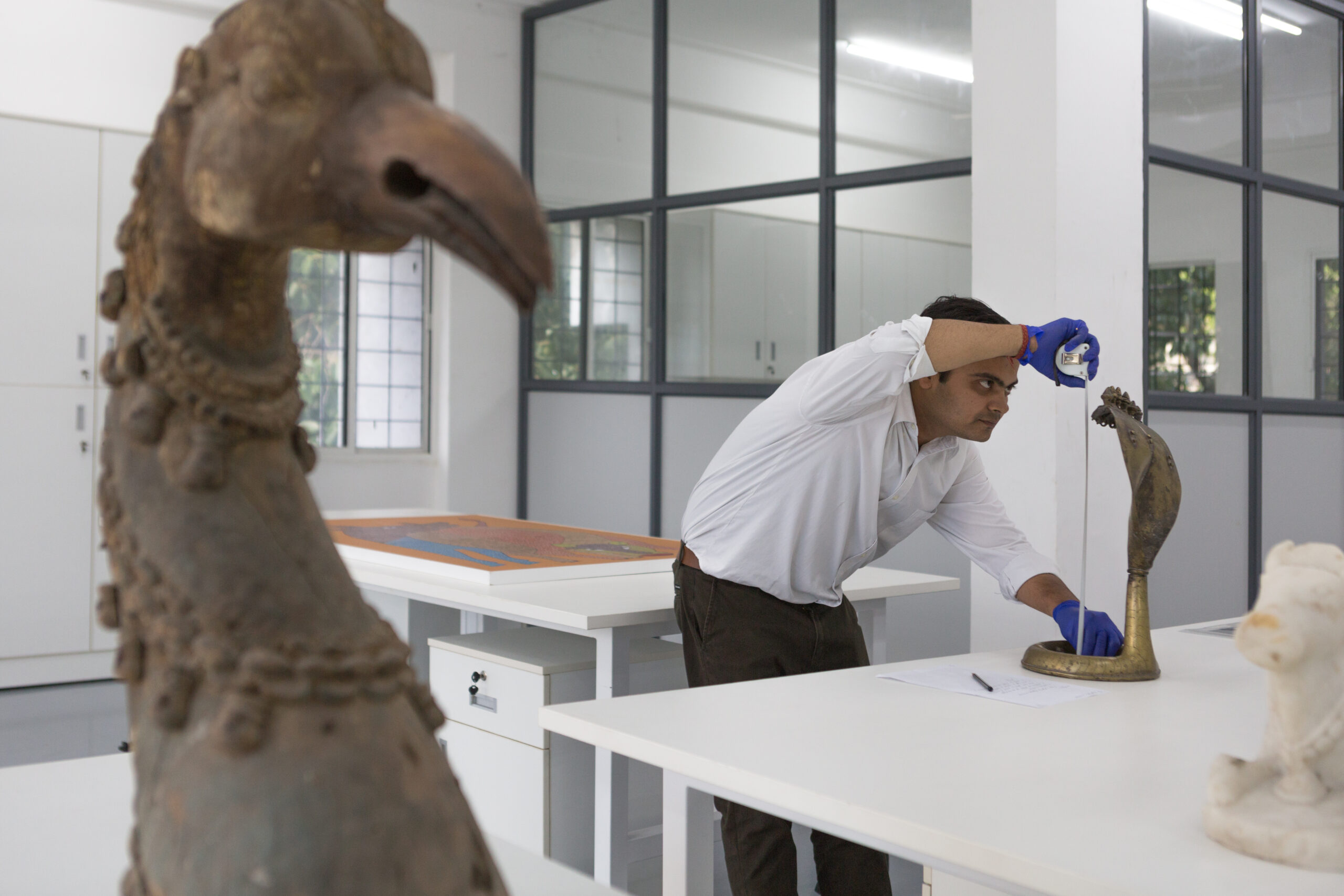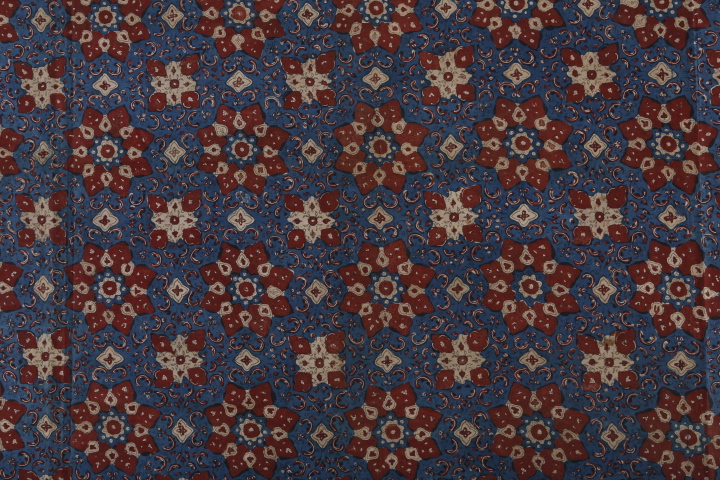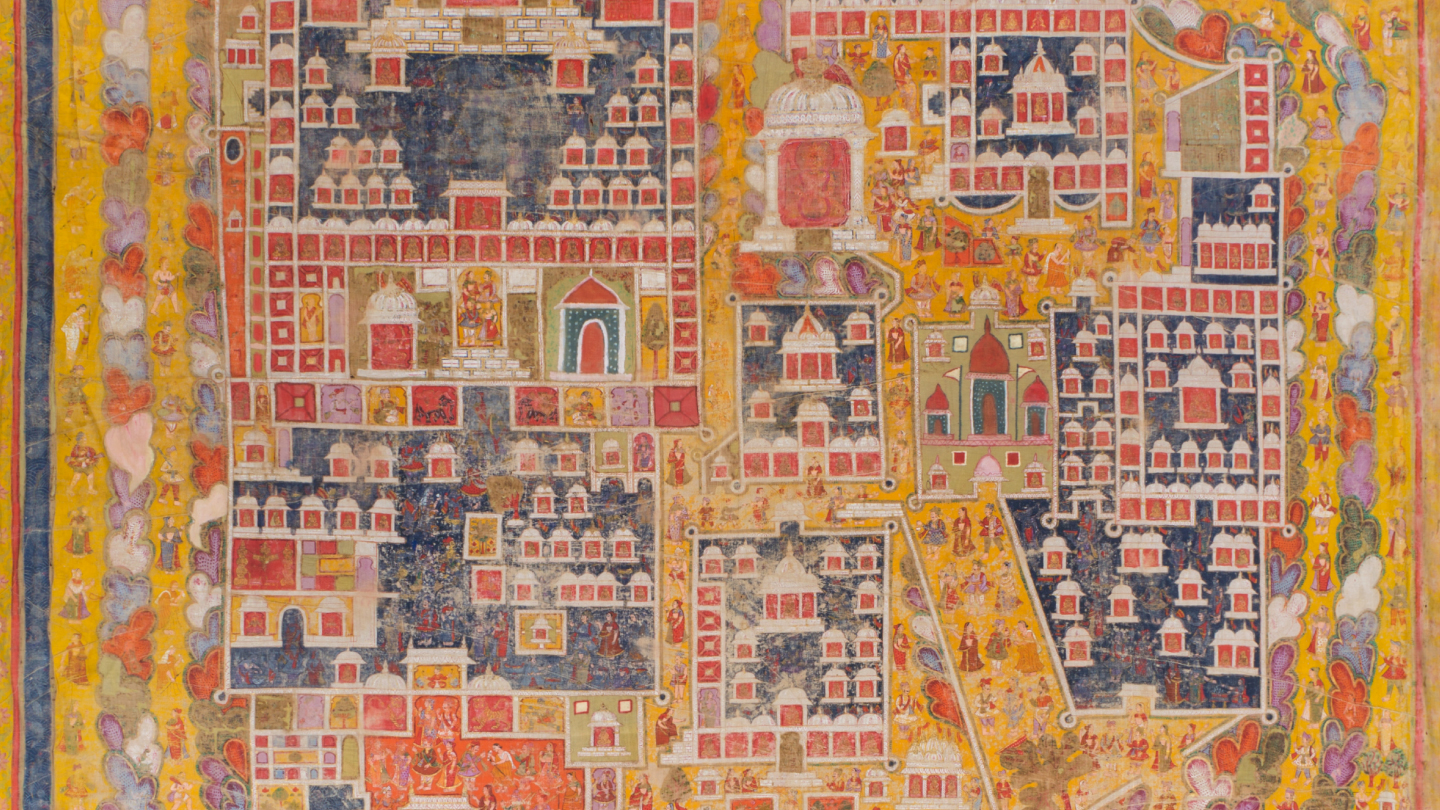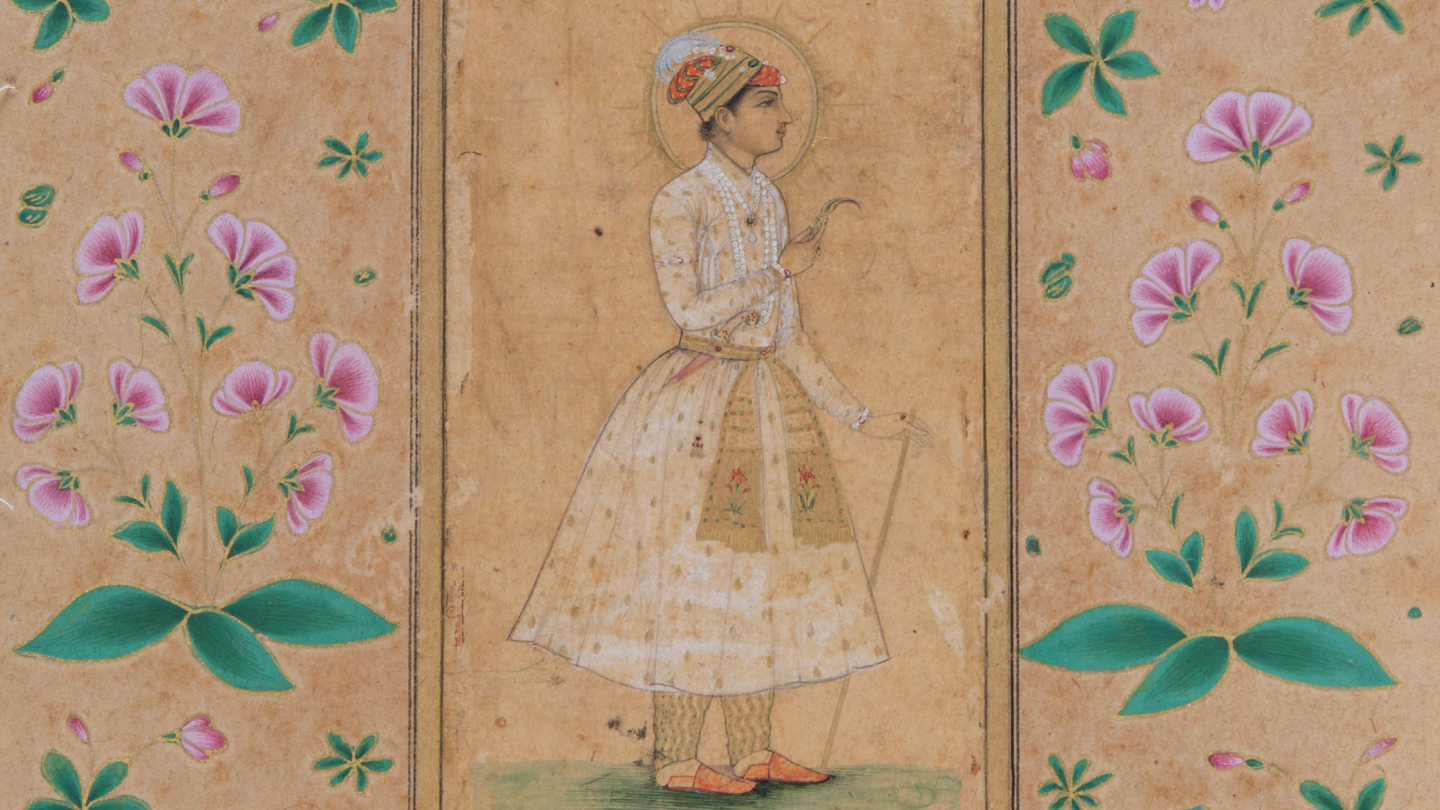Blogs
A Cosmic Vision
Prof. BN Goswamy
For countless generations, artists in different regions of India have been attempting to capture the magnificent form, the Vishwarupa of Krishna — Vishnu.
“I am Time grown Old”
— Bhagavad Gita, Ch. 11
For countless generations, the air has been ringing with Krishna’s utterances in the Bhagavad Gita such as the one above: hoary of age, steeped in mystery and wisdom—but each time one returns to them, one gets the sense, as Ralph Emerson and Henry Thoreau did more than a century and a half ago, as if ‘an empire were speaking to us, nothing small or unworthy, but large, serene, consistent …’ The great text starts as if it were a narrative, the bard Sanjaya being asked by the blind king, Dhritarashtra, to describe to him all that was transpiring on the field of the great battle which was about to begin. Quickly, however, it takes on a different aspect, as we know: that of a prolonged philosophical discourse in which the most profound of questions are asked and a range of answers given. But then sensing, in the midst of it, the Pandava prince, Arjuna’s continuing inability to comprehend ‘the deepest mystery’ of it all, Krishna reveals to him his true self, a concrete vision of the creator and the destroyer, and of time’s deadly destructiveness: ‘a fearsome explosion of countless eyes, bellies, mouths, ornaments, and weapons, gleaming like the fiery sun that illumines the world.’ Understandably, Arjuna is terrified, for who, which mere mortal, can take in the sight of ‘the twelve Adityas, the eight Vasus, the eleven forms of Shiva, the twin Ashvins, and the forty nine Maruts,’ all revealed in one form? Or be able to bear the ‘effulgence of a thousand suns blazing forth in the firmament all at the same time?’ Before him are suddenly limitless wonders, never seen before.
That magnificent form, the Vishwarupa of Krishna — Vishnu, is, however, not for everyone to see. When Arjuna sees it, it is only with the divine eye granted to him for that moment. And when the vision ends, Krishna reminds him that ‘this form that you have seen/ is rarely revealed.’ For, he adds, “Not through sacred lore,/ penances, charity, or sacrificial rites/ can I be seen in the form/ that you saw me.” And yet, generation after generation, and in region after region of India, artists have been attempting to capture that very form in their work. It is a daunting task, for the vision is at once grand and terrifying and wondrous. The brilliance of the words of the eleventh chapter is not easy to match, and to compress everything into one soaring image almost impossible. For how does one bring in nearly all that there is: the “fiery rays of crown and mace and discus,” “brushing the clouds with flames of countless colours;” “roiling river waters, streaming headlong toward the sea” like “moths in the frenzy of destruction flying into a blazing mouth;” the “many mouths and eyes and thighs and feet and bellies and fangs seeing which the worlds tremble;” the “throngs of gods entering the great form — howling storm gods, sun gods, bright gods, and gods of ritual, gods of the universe, twin gods of dawn, wind gods, vapour-drinking ghosts, crowds of celestial musicians, demigods, demons and saints;” a form that has “no beginning, or middle, or end?” The descriptions are remarkably dense, and when all the space, as the text says, is filled with this form alone, all space “between heaven and earth and all the directions,” is there any room left, even a little sliver of it, for the visual artist to enter it, one wonders?

Vishvarupa, 19th century, Opaque watercolour on paper, H. 30 cm, W. 17.5 cm, Jaipur, PTG.01071
With great courage and imagination, however, gamely as it were, hosts of painters in India took up the challenging task over the years, and have turned out some remarkable images. And in a recently published book, Vishvarupa: Paintings on the Cosmic Form of Krishna-Vasudeva by Neena Ranjan, so many of them — some occurring in illustrated manuscripts, others as independent, standalone folios — are brought together. Clearly, each artist brought his own resolve to the task, and his own understanding.
…..
In one breathtaking image — housed in the collection of the Museum of Art & Photography (MAP), Bengaluru — from Rajasthan, Krishna’s Vishwarupa is conceived as a being with just one head and four arms — as different from so many others with multiple heads and arms and legs. Nothing is what it initially appears to be: what seem like normal eyes of the Lord ..… are coloured in the blazing yellow of the sun and the midnight of the moon; his crown is made up of stormy clouds and heads of angels; flames erupt from his mouth; and his legs are made up of images of beasts and animals.
The image teems with forms and figures and symbols, all parts of the body densely packed with them. There are here other works of great ambition and complexity mingling with works that are touchingly simple. Some stay close to the text, and others depart from it. There are additions to the descriptions and eliminations from them, word-bound renderings and leaps into the unknown. But one thing is certain: in the rendering of the great theme, each artist must have discovered something of himself, gained some glimpse of the mysterium magnum that life is and the universe consists of.
The effort of bringing so many works on the theme together, and of interpreting them, must have been enormous, for they are taken from a very large range of styles: Mughal, Rajasthani, Pahari, Kashmiri, Maratha, South Indian, among them. Even modern ‘calendar images’ — ‘photos of the gods’ as they have started being called — are drawn upon. But even as one would like to thank Neena Ranjan for this, one is tempted to wonder if engaging with a theme as moving and as layered as this, did not turn out for her personally to be a voyage of self-discovery? Or changed her, brushing as she must constantly have been against words and images that do not ordinarily even enter one’s ken?
For someone — was it Plato? — said it quite beautifully: “We choose our destinies when we choose our gods.”
The essay was originally published in The Tribune, Chandigarh and it is being reproduced here with the permission of Prof. BN Goswamy and The Tribune. This has now been adapted to feature an artwork from MAP, and thus slightly modified. The part that has been removed from the original essay is replaced by .…. and the part that is added to the essay is in italics (to make it relevant to the image from MAP).
Prof. BN Goswamy is an Indian art historian and critic, best known for his scholarship on Indian miniature paintings, particularly Pahari painting, and is the author of over twenty books on arts and culture.
